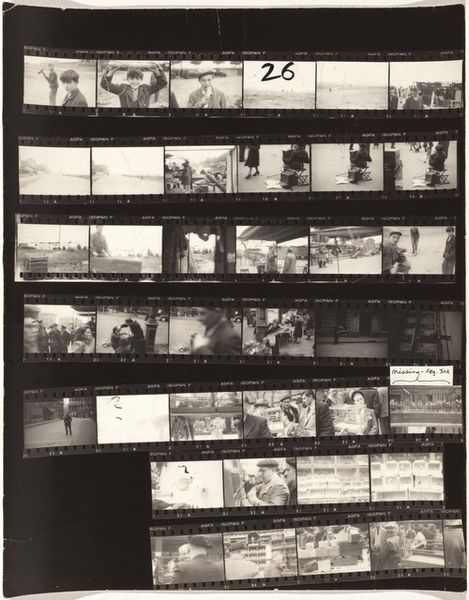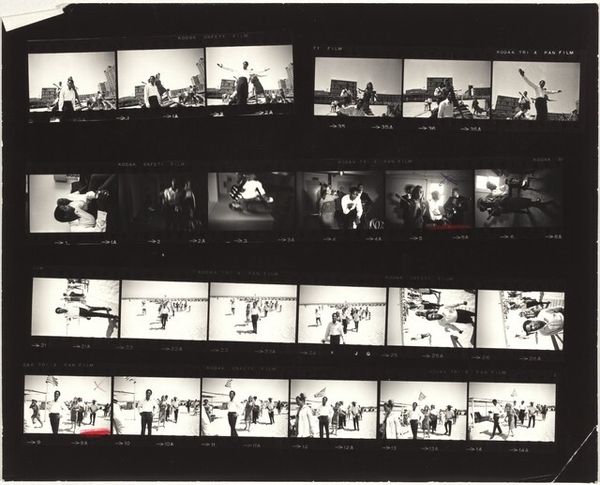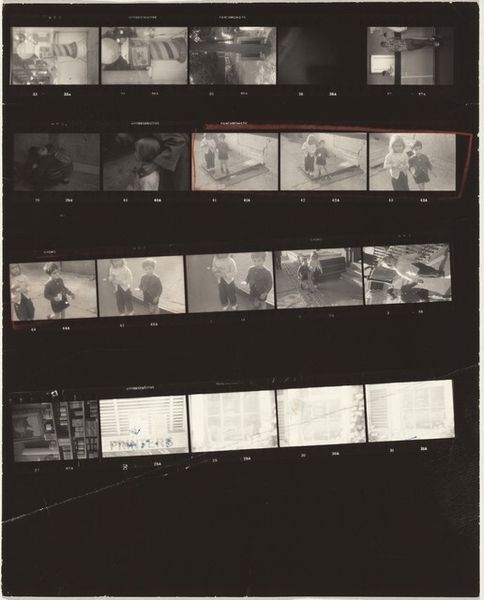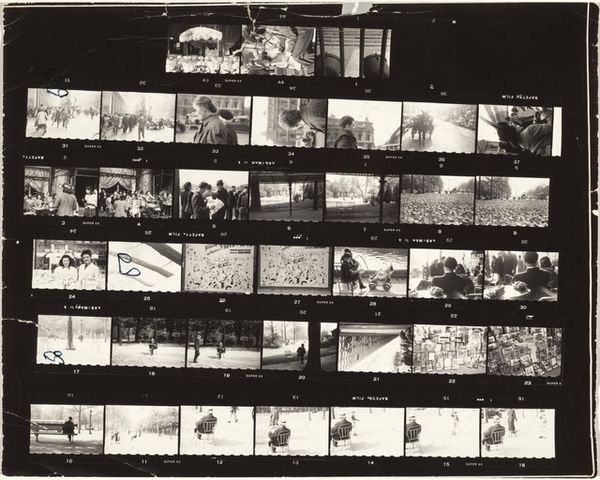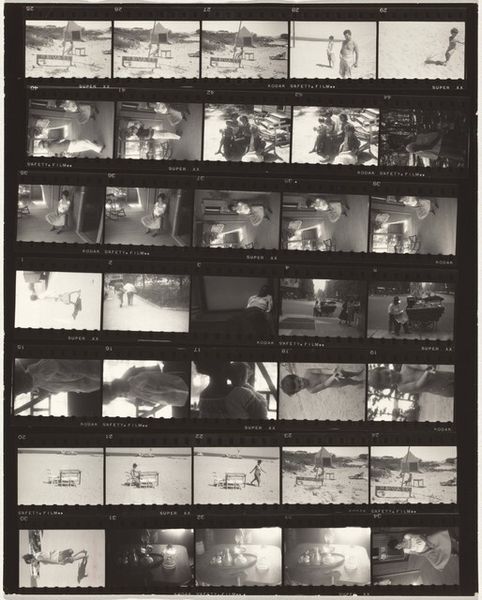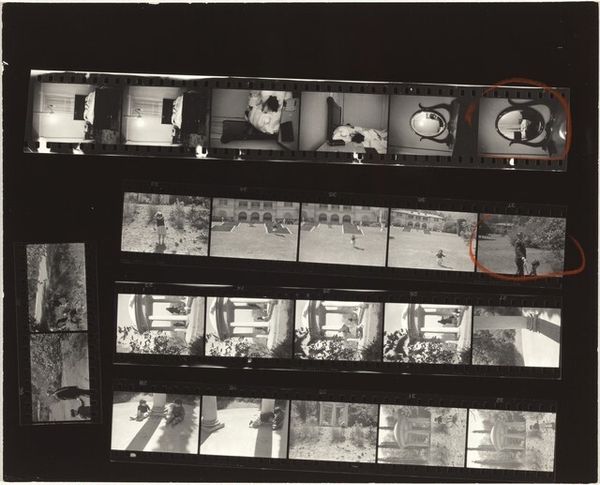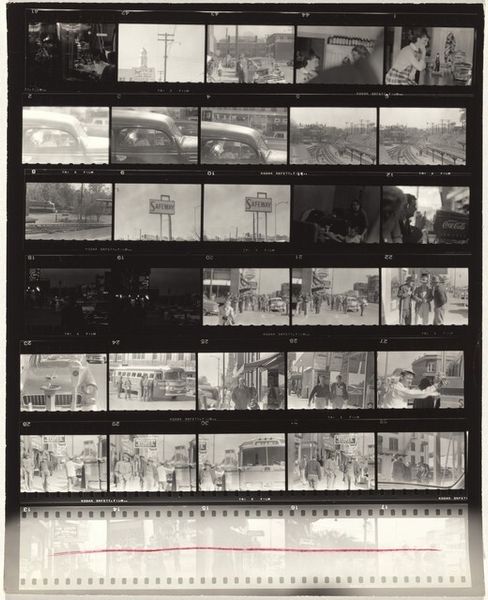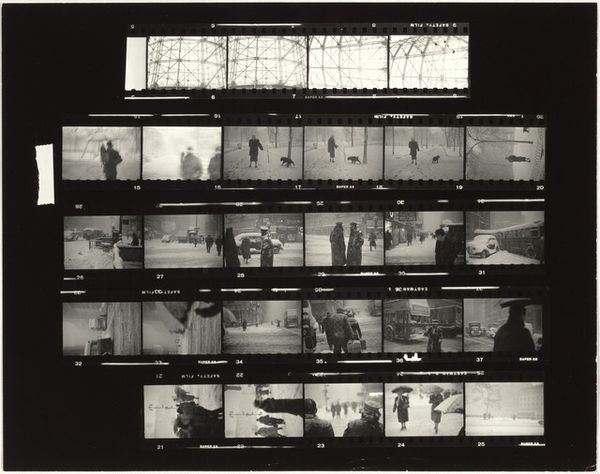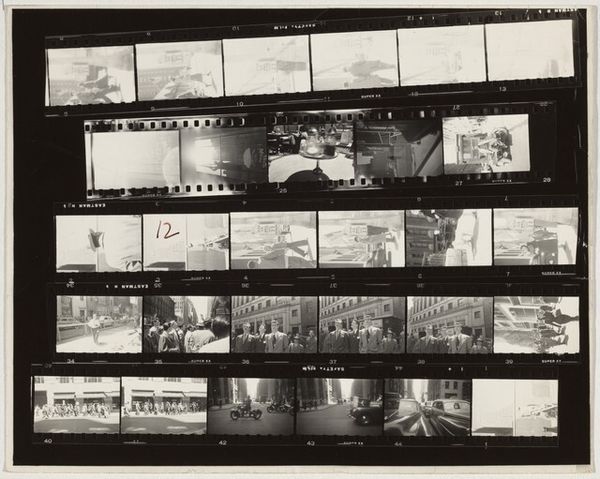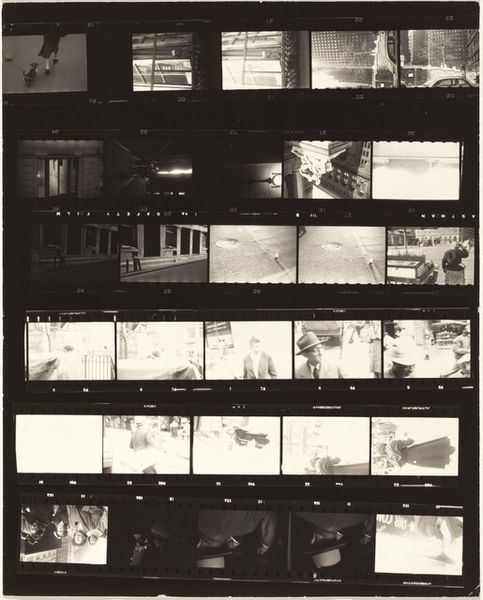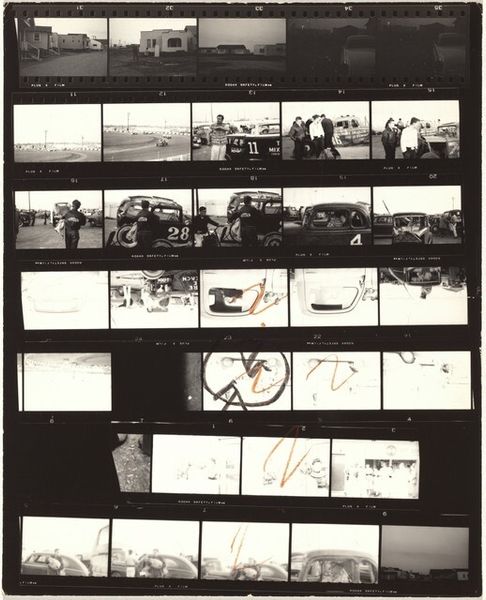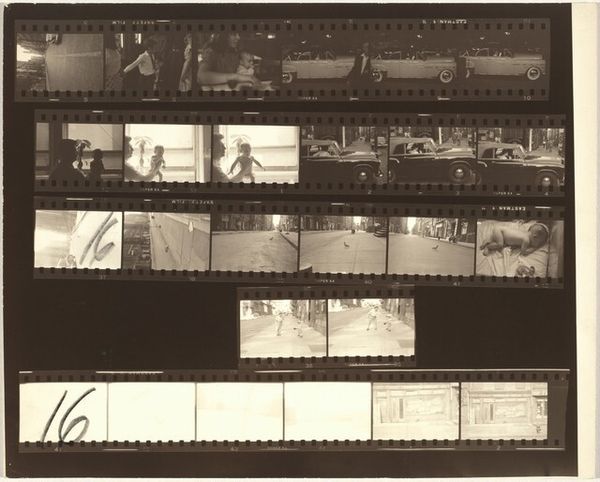
Dimensions: overall: 17.9 x 23 cm (7 1/16 x 9 1/16 in.)
Copyright: National Gallery of Art: CC0 1.0
Editor: This is "Bullfight--Valencia, Spain 13/Lines of My Hand 35," a gelatin silver print by Robert Frank, from 1952. It shows multiple frames from what appears to be a roll of film, various snapshots of a bullfight, and street scenes. The raw materiality of the filmstrip itself is pretty striking. How do you interpret this format choice? Curator: Well, this isn't just a series of isolated images; it’s about the physical and chemical *process* of photography. Frank lays bare the means of production. He isn't trying to conceal the 'work' of making photographs. Instead, the raw edges, the sprocket holes – all these things typically hidden – are right there on display. Think of it as challenging the high art status traditionally given to polished photographs, almost like a documentary approach to image-making. Editor: I see what you mean, it's almost anti-art in its approach. Are you suggesting this has some link with labor? Curator: Precisely! Consider the labor involved: the photographer selecting the scenes, developing the film, making prints, and then choosing to *present* the entire roll, emphasizing the handcraft. Then think about what is consumed: the spectacle of the bullfight as performance and entertainment, the artist's use of photos, or "slices of life" as a consumable commodity, or the audience now processing and reflecting on all these layers of the product. What statement is Frank trying to make, presenting Spain, Spanish traditions and himself in this way? Editor: It is not just presenting single, selected moments. The format suggests continuity, a flowing narrative of experiences that is often absent in individual, framed photographs. Curator: Indeed. By making visible the normally unseen elements, such as the film roll, and incorporating it directly, we move beyond a romanticized or purely aesthetic viewing of the depicted content. How might the contrast, use of lighting, angles affect this narrative, too? Editor: It shines a new light, or many lights, on it, highlighting the labor, process, and commodification behind these images. Curator: Right. It asks us to consider the photograph not just as a representation but as a physical object embedded in a specific social and economic context. We’ve gained an interesting perspective by focusing on process.
Comments
No comments
Be the first to comment and join the conversation on the ultimate creative platform.
